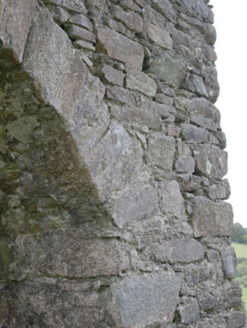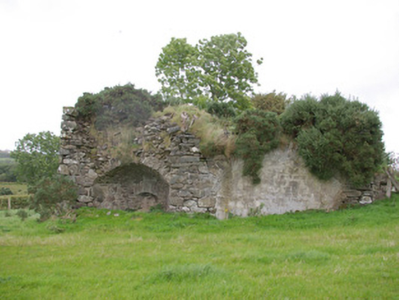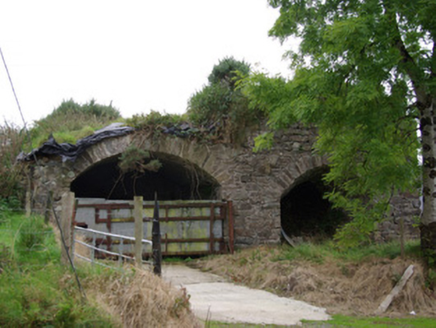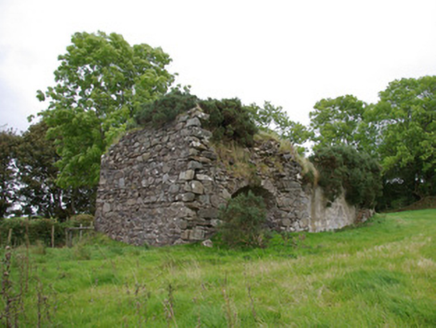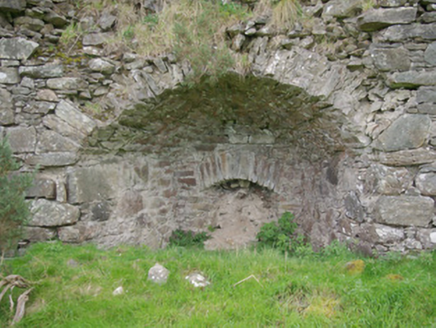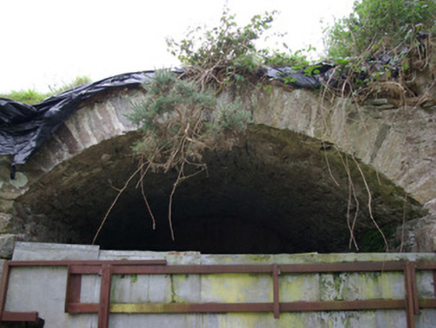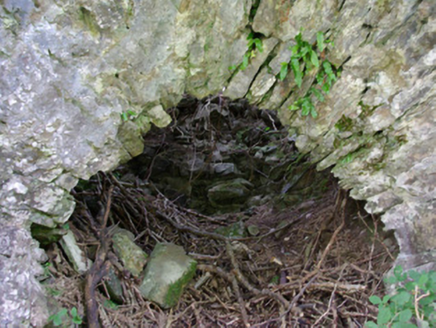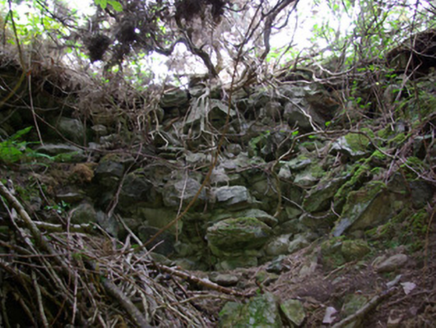Survey Data
Reg No
40906923
Rating
Regional
Categories of Special Interest
Social, Technical
Original Use
Kiln
Date
1800 - 1840
Coordinates
214300, 399538
Date Recorded
21/09/2007
Date Updated
--/--/--
Description
Freestanding single-bay lime kiln on rectangular-plan, erected c. 1820, having two single-bay barrel-vaulted storage sheds attached to the rear elevation (north). Tapers outwards towards base. Now out of use. Constructed of roughly coursed rubble stone masonry with roughly squared quoins to the corners. Segmental-headed opening to front (south) having recessed oven aperture with splayed jambs. Former loading chamber on ovoid/circular-plan having rubble masonry construction; chamber now partially collapsed. Two attached barrel-vaulted single-bay sheds to the rear having segmental-headed arches with roughly dressed voussoirs. Earthen embankment to site, now denuded. Set into slope adjacent to small rural road. Former quarry to the south-east.
Appraisal
This interesting former lime kiln, probably erected during the first half of the nineteenth-century (on Ordnance Survey first edition six-inch map of c. 1836), survives in relatively good condition and retains its early character. This particular lime kiln is notable for the two attached barrel-vaulted storage sheds, which were probably used to store limestone and/or lime, or to break up the rocks for insertion in the oven. This structure is well-built using local rubble stone masonry with roughly dressed voussoirs to the arches. The barrel-vaulted roofs are of some technical merit. The embankment to the rear, now denuded, was built/modified to allow for the easy loading of stone through an opening in the roof structure, while the aperture to the front was used to fire the oven to burn the stone and produce lime. Lime kilns appear to have come into popular use in Ireland during the eighteenth century and were a very common feature in the rural landscape up until the first decades of the twentieth century. They were used to burn limestone to produce lime, which was used as an agricultural fertilizer and spread on agricultural land, or in construction as a mortar and a render. Lime was also used for lime-washing buildings, particularly farm buildings, as it was regarded as a cleansing agent at the time. This lime kiln was probably in use by a local farmer and probably provided lime to small farmers etc. in the immediate environs. There is a small quarry a short distance to the south-east where the stone used in this kiln was formerly sourced. There were a number of limes kilns in the immediate environs of this site up until the early-twentieth century (Ordnance Survey twenty-five inch map of 1904), including one immediately to the east (not investigated/viewed). Small rural lime kilns started to go out of common usage during the late nineteenth-century with the advent of industrial-scale lime production facilities and improvements in the transport network, particularly the development of the railways. This simple feature is an interesting feature in the rural landscape to the west of Convoy, and is an appealing and unassuming element of the agricultural/industrial and social heritage of County Donegal.
